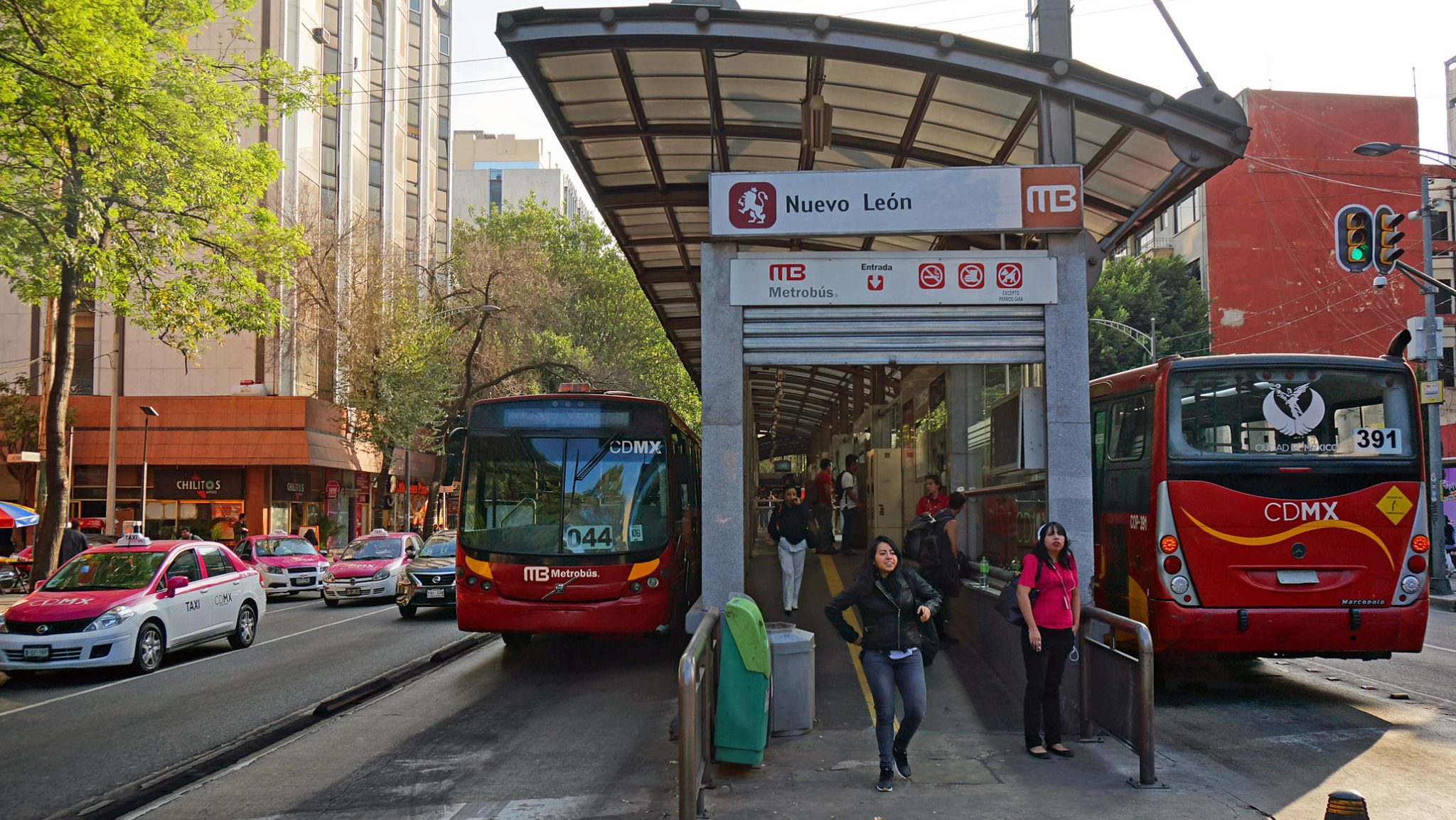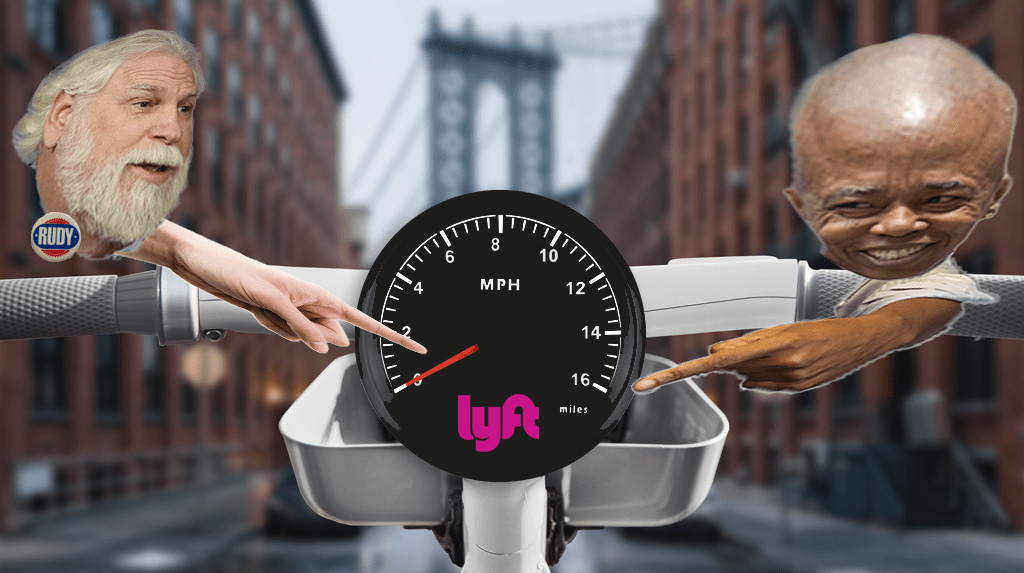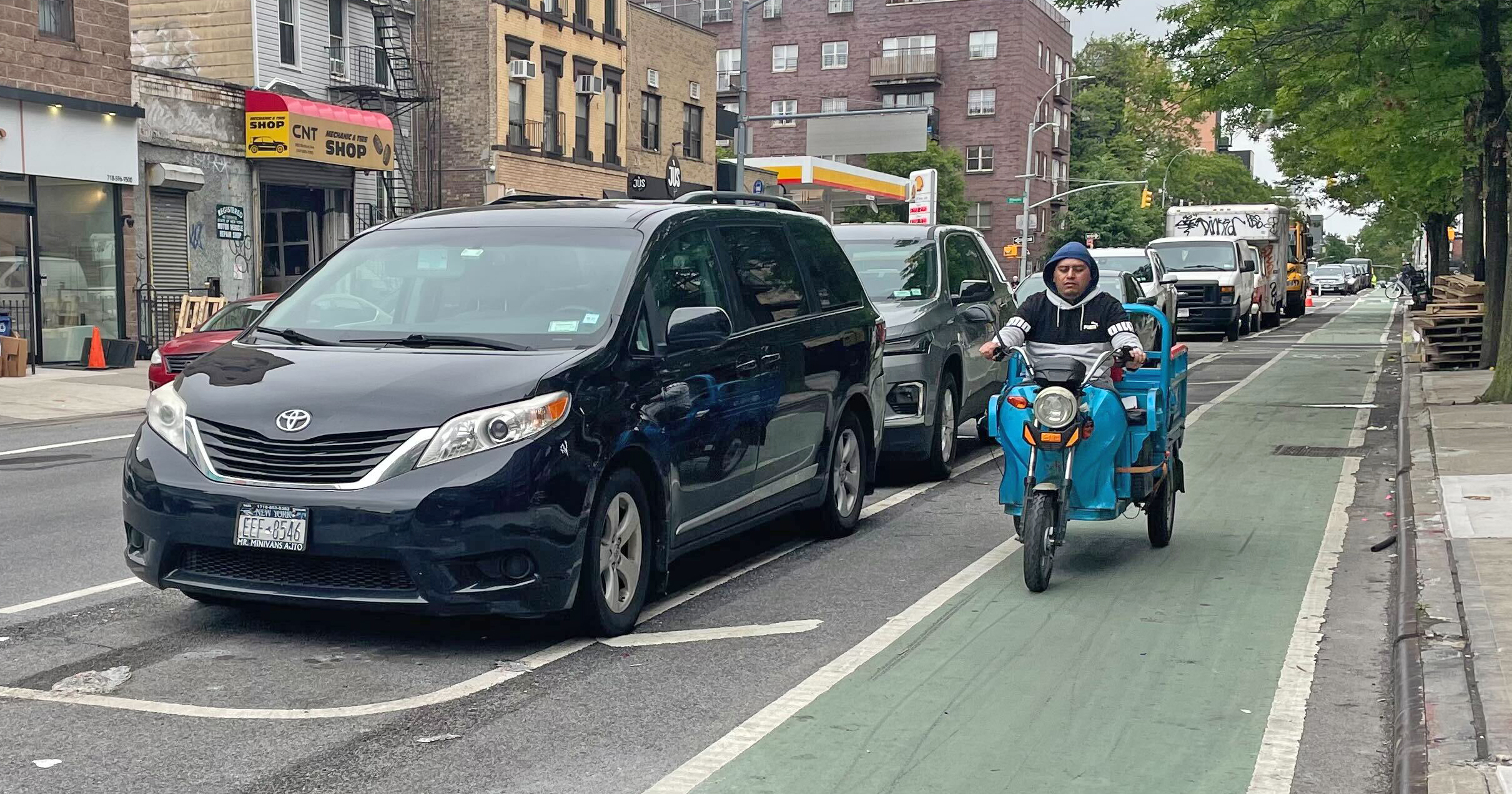 Car-sharing is already a part of New York's transportation system, but new DCP regulations could allow it to spread much faster. Graphic: WSJ
Car-sharing is already a part of New York's transportation system, but new DCP regulations could allow it to spread much faster. Graphic: WSJLast week the Department of City Planning announced an initiative to promote car-sharing in New York City. The new zoning amendments remove some of the uncertainty for car-share companies by spelling out where shared cars can be stored. At a hearing on the proposed changes last Monday, one member of the planning commission suggested an additional step with big implications for livable streets -- tying car-share to reduced parking requirements -- but the planning department has declined to draft rules that go that far.
The promise of car-sharing lies in its potential to reduce car ownership rates. National studies show that between 6 and 32 percent of car-share users give up a car, according to Steve Johnson, the City Planning staffer in charge of the project.
Car-sharing also reduces incentives to drive compared to car-ownership. While the costs of owning a car are largely fixed -- you've spent a bundle of money on the car already, so driving to the store doesn't cost much more -- the costs of a shared car are tied almost entirely to how much you drive. "When you're paying by the hour, you drive more efficiently, because you can see the costs associated," Johnson told the City Planning Commission at the hearing.
Data specific to New York City are not available, but according to research by UC Berkeley professor Robert Cervero, car-share members in San Francisco significantly decreased their total driving compared to a matched control group.
If car-sharing reduces car ownership and driving, it could play an important role in a sustainable transportation system. Car-sharing "could revolutionize the desire to own cars in New York City," City Planning Commissioner Amanda Burden said at the hearing. The obstacle to further implementation, she said, is that "there isn't clarity about where these cars can park." The current zoning text, written in 1961, leaves too much uncertainty about where shared cars can go, which makes it more difficult and expensive for car-share companies to expand.
The new regulations would set precise conditions on how many off-street spaces could be given over to car-sharing companies in lots across the city, ending that uncertainty. The regulations won general approval from the ten planning commissioners in attendance. Commissioner Karen Phillips, former CEO of the Abyssinian Development Corporation, offered an intriguing additional suggestion: using car-sharing as a lever to reduce the cost of building affordable housing by lowering parking requirements.
If each shared car is used by 40 people, she reasoned, you could build many fewer spaces than parking minimums require while making the option of driving available to the same number of people. That would reduce costs and allow more affordable units to be built on a given lot.
Howard Slatkin, DCP's deputy director for strategic planning, offered a litany of objections as he explained why Phillips's suggestions hadn't been included in the department's proposal. You can't use car-sharing to reduce parking minimums, he said, because "at the time you're building, you don't know who the customer is" and can't ensure that a private car-sharing firm will operate at the development. Slatkin also reasoned that allowing shared parking spaces to replace residential off-street spaces would negate the intent of parking minimums -- to ensure that building residents have a place to park where they live. That outcome has been shown to induce more driving.
To unlock the full potential of car-sharing, Phillips's suggestion to use it in tandem with lower parking minimums is crucial. If car-sharing gets members away from car ownership, maintaining parking minimums could effectively undo that progress by creating a glut of newly-available parking. Likewise, if car-sharing allows 40 people rather than one or two to share a parking space, it would be a pity not to use the freed up space for new homes, offices, and public space. Moreover, all of Slatkin's objections to a vigorous attempt to use
car-sharing to promote sustainable transportation are logistical. DCP should be able to set up incentives to overcome those hurdles, perhaps similar to how many cities give density bonuses to developers who promise to provide certain community benefits.
By helping to expand car-sharing, the Department of City Planning is moving the city one step closer to a more sustainable transportation system. The next step is to pair the drop in car ownership that car-sharing promises with a drop in parking requirements.





